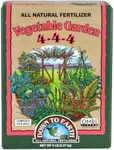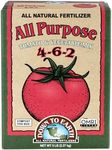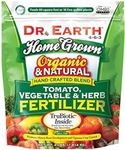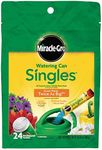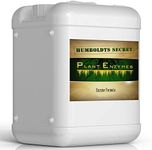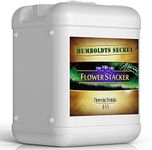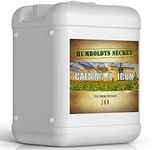Buying Guide for the Best Fertilizer For Garlic
Choosing the right fertilizer for your garlic is crucial for ensuring a healthy and bountiful harvest. Garlic is a heavy feeder, meaning it requires a good amount of nutrients to grow well. When selecting a fertilizer, you need to consider the specific needs of garlic plants, the soil condition, and the growth stage of the garlic. Here are some key specifications to help you make the best choice for your garlic crop.NPK RatioThe NPK ratio stands for Nitrogen (N), Phosphorus (P), and Potassium (K), which are the three primary nutrients in fertilizers. Nitrogen promotes leafy growth, phosphorus supports root development and flowering, and potassium enhances overall plant health and disease resistance. For garlic, a balanced NPK ratio like 10-10-10 or one slightly higher in nitrogen, such as 12-6-6, is often recommended. If your soil is already rich in nitrogen, you might opt for a lower nitrogen ratio. The right NPK ratio ensures that your garlic gets the necessary nutrients at different growth stages.
Organic vs. SyntheticOrganic fertilizers are derived from natural sources like compost, manure, or bone meal, while synthetic fertilizers are chemically manufactured. Organic fertilizers improve soil structure and microbial activity over time, which is beneficial for long-term soil health. Synthetic fertilizers provide nutrients more quickly and can be more precisely formulated. If you prefer a more sustainable approach and are willing to wait for gradual nutrient release, organic fertilizers are a good choice. For quicker results and more control over nutrient levels, synthetic fertilizers might be more suitable.
Slow-Release vs. Fast-ReleaseSlow-release fertilizers gradually release nutrients over time, providing a steady supply to the garlic plants. Fast-release fertilizers deliver nutrients quickly, which can be beneficial if your plants show signs of nutrient deficiency. Slow-release fertilizers are ideal for long-term feeding and reducing the risk of nutrient burn, while fast-release fertilizers are useful for giving your garlic a quick boost, especially during critical growth stages. Consider your garlic's growth stage and immediate nutrient needs when choosing between these options.
MicronutrientsIn addition to the primary nutrients (NPK), garlic also benefits from micronutrients like calcium, magnesium, sulfur, and trace elements such as iron, zinc, and manganese. These micronutrients play vital roles in various plant functions, including enzyme activity and chlorophyll production. A fertilizer that includes micronutrients can help prevent deficiencies and promote overall plant health. If your soil test indicates a lack of specific micronutrients, look for a fertilizer that addresses those deficiencies.
Soil pH CompatibilityGarlic prefers slightly acidic to neutral soil with a pH range of 6.0 to 7.0. Some fertilizers can alter the soil pH, so it's important to choose one that is compatible with your soil's current pH level. If your soil is too acidic or too alkaline, you may need to adjust the pH before applying fertilizer. Soil testing can help you determine the pH and choose a fertilizer that will maintain or adjust the pH to the optimal range for garlic.

